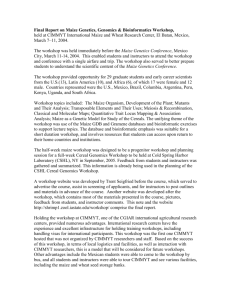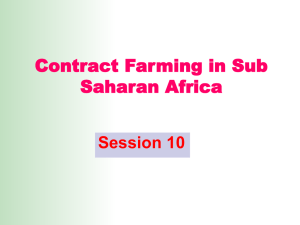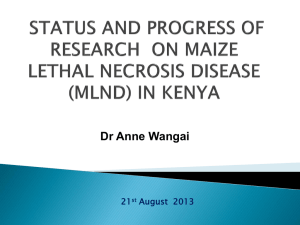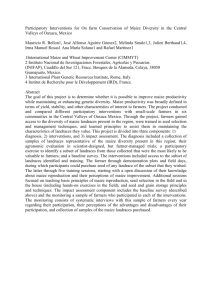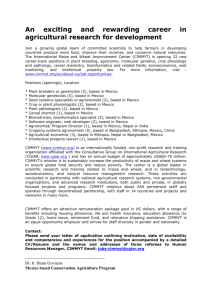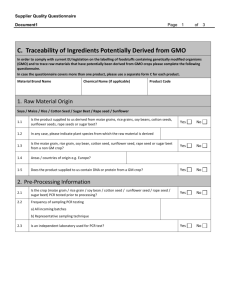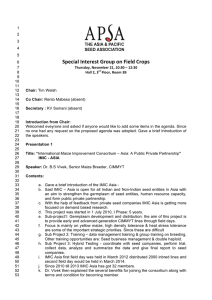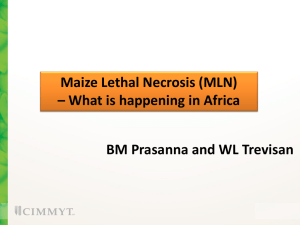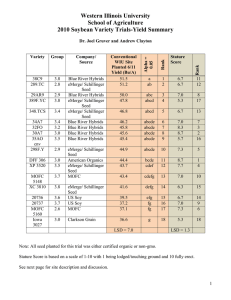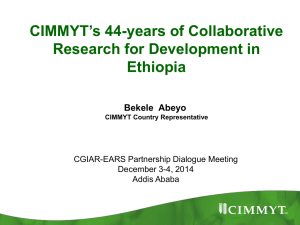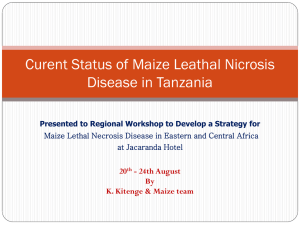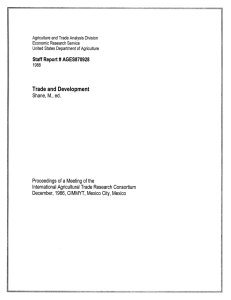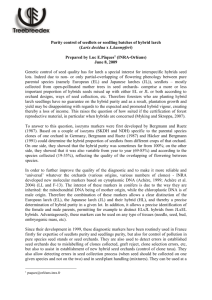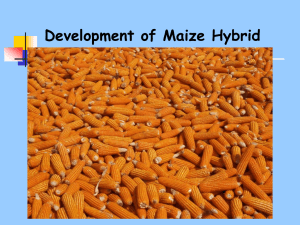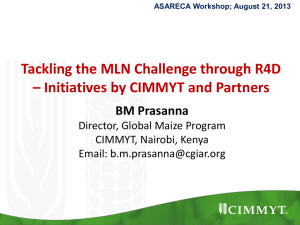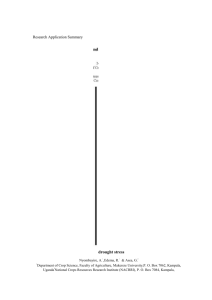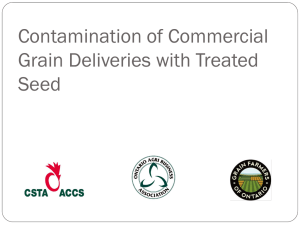Strategies to avert entry of MLNin Ethiopia
advertisement
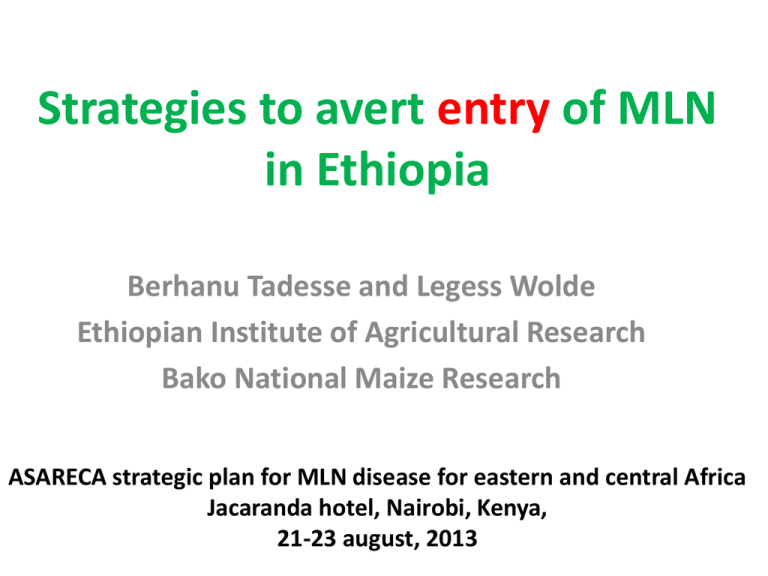
Strategies to avert entry of MLN in Ethiopia Berhanu Tadesse and Legess Wolde Ethiopian Institute of Agricultural Research Bako National Maize Research ASARECA strategic plan for MLN disease for eastern and central Africa Jacaranda hotel, Nairobi, Kenya, 21-23 august, 2013 Maize Lethal Necrosis disease • Appeared in East Africa in 2011 • It is already in Kenya, Uganda, Tanzania, and recently in south Sudan and Rwanda • No report in Ethiopia • With the current trend, it can be disseminate to other countries • It is an potential danger in the region – Food security – Economy – Employment Maize in Ethiopia Country Area (Ha) Burundi Ethiopia Kenya Malawi Rwanda Uganda Tanzania Zambia Zimbabwe South Africa 119,478.00 2,013,044.00 2,159,322.00 1,650,000.00 253,698.00 1,094,000.00 4,118,117.00 1,074,658.00 960,000.00 3,250,000.00 Production (tons) Yield (t/ha 140,536.00 1.2 6,069,413.00 3.0 3,600,000.00 1.7 3,618,699.00 2.2 573,038.00 2.3 2,734,000.00 2.5 5,104,248.00 1.2 2,852,687.00 2.7 1,000,000.00 1.0 3.8 12,500,000.00 • It is the most important food crop • 1st in production and second in areas • More than 9 million house holds are growing maize Arid dry land Moist dry land Potential areas Semi-arid dry land Water bodies Sub-moist dry land MoA, 2005 Possible entry points • The cropping system doesn’t favor • The area is not well known for maize production • Long dry season Source: Google maps Strategies • Nationally no strategy developed • But our institute has two strategies: 1. Prevention 2. control Prevention strategy • Difficult: because insect transmitted • Prevent introduction by planting materials • % of seed transmission is very – Grain importation: no data – Seed import • No seed introduction except breeder seed (seed co and pioneer) – Trial • Working in close collaboration with CIMMYT • CIMMYT is producing seed in MLND free areas • CIMMYT sends trials seed to non-MLND countries grown in CIMMYT-Zimbabwe • We grow introduced materials only under quarantine fields Control strategy • These are strategies to minimize its effect if the disease happens – Elite inbred lines, popular hybrids and OPVs sent to CIMMYT for screening • 84 elite lines including parents of popular hybrids • 13 popular hybrids and OPVs – Requested CIMMYT’s promising inbred lines and pre-commercial hybrids • We requested all hybrids, single crosses and parental lines • We will make the crossing in the up-coming off-season starting in October, 2013 • In the 2014 main season, we will go for release – Single cross parent of one of our released three way cross hybrid happened to be MT for MSV Future plan • We highly invest on research to develop MLN resistant varieties in collaboration with CIMMYT and other partners • Conduct periodic survey in possible entry points • Establish quarantine system for imported maize materials including trial seeds • Training of researchers, seed producers and other relevant stakeholder to create awareness about the disease Thank you!
